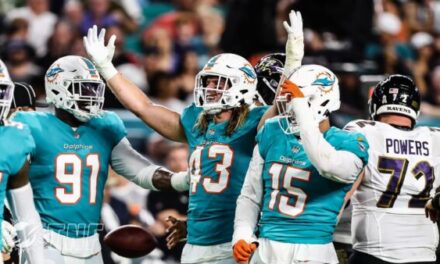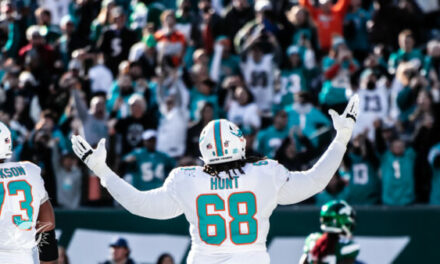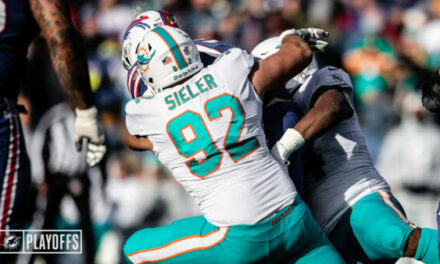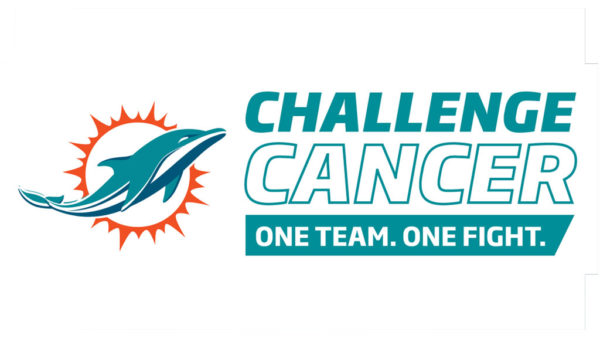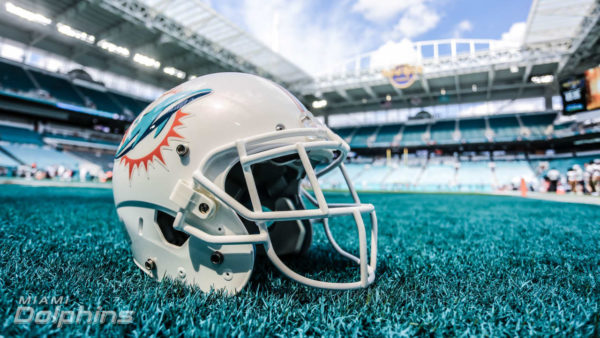
The new league year officially kicks off on March 16 at 4:00 p.m. EST, marking the official beginning of the free agency and trading period. However, teams may negotiate with the agents of players who will become unrestricted free agents during the upcoming legal tampering window, beginning March 14 at noon EST.
So what will Miami do when the floodgates open? Let’s take an in-depth look at where the Miami Dolphins stand.
Chris Grier entered the 2022 offseason with the most cap space in the league with just under $63 million to spend. He began his spending early by franchise tagging tight end Mike Gesicki. The franchise tag will cost Miami $10.93 million against the cap this year (unless he is traded or they agree on an extension). Leaving $51.77 million of cap space available. I will refer to this figure as $52 million for convenience.
Before we talk about the blue-chip free agents, let’s address some elephants in the room.
Xavien Howard
Howard has wanted a new deal for over a year now. Chris Grier reworked his contract last offseason and assured him he would receive a new deal this March. Miami will have to either raise their pay or trade their pro bowl talent. Miami turned down trade offers from the Ravens before the trade deadline, so one would assume a new contract is coming. According to reports, Howard was upset that he was not the highest-paid cornerback on the roster. There are some creative ways to get this deal done, but he wants a $2 million raise.
[pickup_prop id=”21494″]
Quarterback
Miami needs a backup quarterback. After hearing what Mike McDaniels is looking for in a backup, Grier will likely address this in free agency. Quality backup QBs like Tyrod Taylor/Teddy Bridgewater/Marcus Mariota will cost around $5-$6 million. And if what Mike Tannenbaum is saying is true, Trubisky’s payday will be about $10 million more than that. For the sake of this article, we will budget around the league average of $5.5 million for the backup quarterback position.
Punter
Last offseason, Grier went bargain hunting at the punter position, signing Michael Palardy to a one-year, $1.4 million contract. Palardy struggled early but finished with the NFL’s 23rd-best net punt average. While I would not rule out Palardy resigning, it is important to note Bryan Anger was the highest-drafted punter since 1995 (70th overall in 2012), and his rookie contract was four years/$2.9 million, or $750K APY.
This is worth noting because a punter in this year’s draft class is quickly becoming known as ‘Legatron.’ San Diego State’s Matt Araiza had an average of just over 51 yards per punt while shattering most FBS punting records, including the number of punts above 60 yards. During the combine, we saw Araiza bombing punts nearly 80 yards. I’ve already spent entirely too much time on the punting situation, but given the modest cap hit and expected production, I would expect to hear Araiza’s name called as early as day two of the draft. Either way, Miami needs a punter and will spend at least another million on a punter, whether through the draft or free agency.
Draft Class
Many people forget that signing the draft class requires cap space. Last year, before undrafted free agent deals, Miami’s rookie class cost around $7 million in effective cap space. Factoring in UDFA deals, we can conservatively estimate this number to be around $8 million.
[pickup_prop id=”21489″]
Roster Churning
Most teams set aside about $2 million to churn the bottom of their roster when completing the final 53. You never know who may end up on waivers on cut-down day, and you want to be sure cash on hand isn’t prohibitive.
Now that we have allocated that $18.5 million, we can more realistically look at what Miami actually has to spend, $33.5 million.
Miami has some maneuvers that can open up additional cap space: Eric Rowe, Allen Hurns, Jesse Davis, Clayton Fejedelem, and Adam Shaheen, among them. However, Miami should prioritize re-signing Mack Hollins and replace any of those aforementioned players if cut. So we are going to consider those upcoming moves a net-wash.
Other major areas of need: OL, DE, LB, & WR
Offensive Line
We all know how bad this unit was last year. Historically, bad. The only above-average starter was Robert Hunt. But there is room for optimism. The unit is full of young assets. Robert Hunt, Austin Jackson, Liam Eichenberg, Michael Dieter, Robert Jones, and Solomon Kindley are all on cheap rookie deals. And only Kindley, a former 4th round pick in 2020, could face an uphill battle as Miami begins its shift to a zone-blocking scheme. There are a lot of question marks with this unit; Eichenberg/Dieter/Hunt should all start. Miami needs two starters, so is paying left tackle Terron Armstead $24 million a year the right answer?
The free-agent tackle market is sparse. The trade market needs to be explored, specifically La’el Collins and his $10 million dollar cap hit. If Grier can solidify a deal for La’el Collins, Miami can double up by adding a starting guard. Chicago’s free-agent James Daniels would be a perfect fit with a hit of $8 million. James Daniels is a classic zone-blocking guard who also has center experience.
The options are one expensive free agent or two starters, and regardless of which path they take, they’ll spend around $20 million on this unit.
That leaves $13 million. The upcoming draft class looks deep at both wide receiver and linebacker, which leads us to defensive end.
Defensive End
Emmanuel Ogbah doesn’t seem thrilled with Miami’s offer and wants to test the free-agent market. Sportrac estimates Ogbah’s new deal to be over $10 million a year. A deal like that would hinder Miami’s flexibility. If not resigned, defensive end becomes a massive hole. A free agent like Chicago’s Akiem Hicks could be a nice fit in Miami. At age 33, no one is going to give Hicks a long-term deal, and although he is not quite the pass rusher Ogbah is, he has proven to be a serviceable starter at half the expected price point of Ogbah. $5 million or $10 million is a wide variance, but we will assume Miami spends at least $5 million.
That leaves roughly $8 million in cap space.
[pickup_prop id=”21490″]
Linebacker
A linebacker like Jordan Hicks or Leighton Vander-Esch makes sense. Still, I believe Grier would rather spend every penny ensuring Tua has every opportunity to showcase why he was worthy of being the 5th overall selection.
Wide Receiver
DeVante Parker’s modest $6 million cap hit may be the best value on the entire team. Miami still needs a YAC WR to pair with Jaylen Waddle. There are two free agents in this class that are elite in this category: JuJu Smith-Schuster and D.J. Chark. JuJu signed a one-year, eight million dollar deal to stay in Pittsburgh last season. D.J. Chark will likely get a deal of around $11 million. Although signing Chark may require some creativity, the Dolphins’ brass can make it work. Either wide receiver would be a great fit in Mike McDaniels’ scheme.
Miami will be active in free agency; however, I expect them to take their time and bargain hunt. Buckle up; the next few days will be fun!
EDITOR’S NOTE: DOLPHINS TALK IS PARTNERING WITH OUR GOOD FRIENDS OVER AT PICKUP TO GIVE AWAY VSIN SUBSCRIPTIONS TO 3 LUCKY WINNERS. ALL YOU HAVE TO DO IS MAKE YOUR PICK ON THE PICKUP PROP IN THIS ARTICLE AND FOLLOW THE STEPS TO VERIFY YOUR PICK FOR A CHANCE TO WIN.
[pickup_prop id=”21492″]

